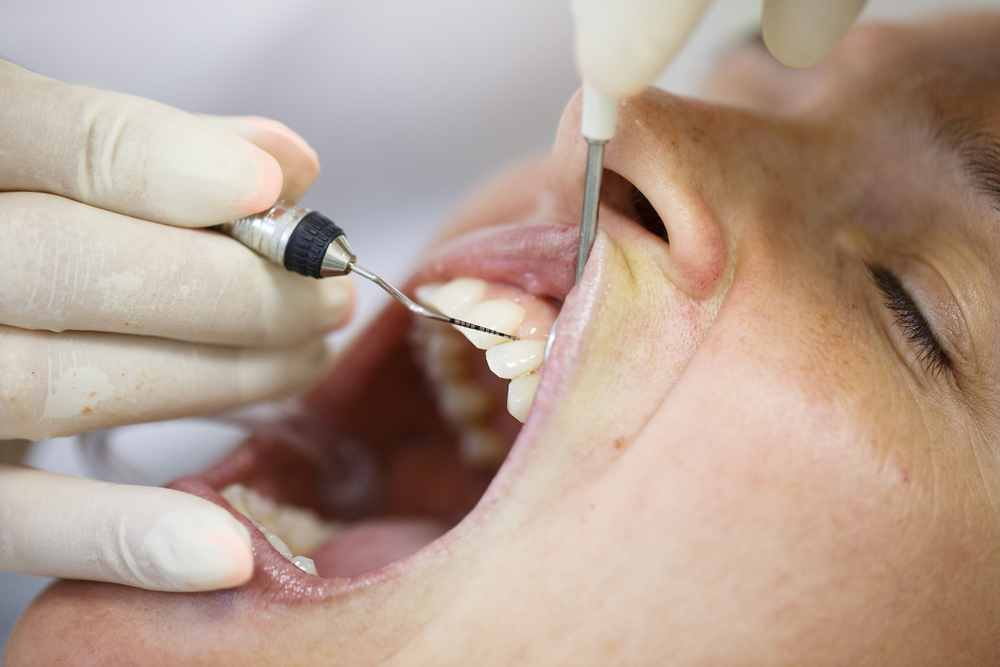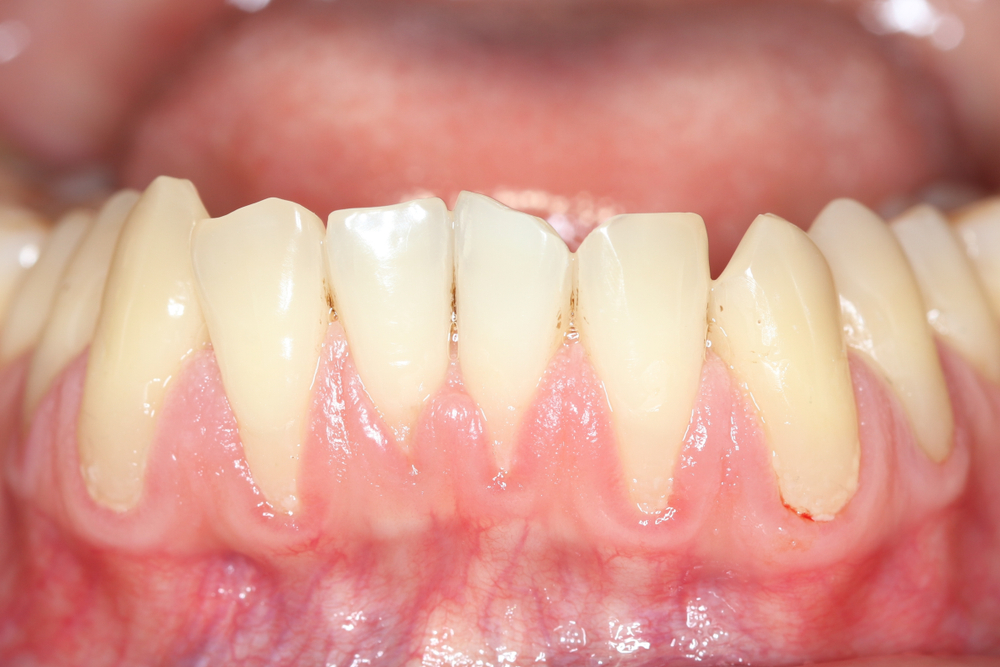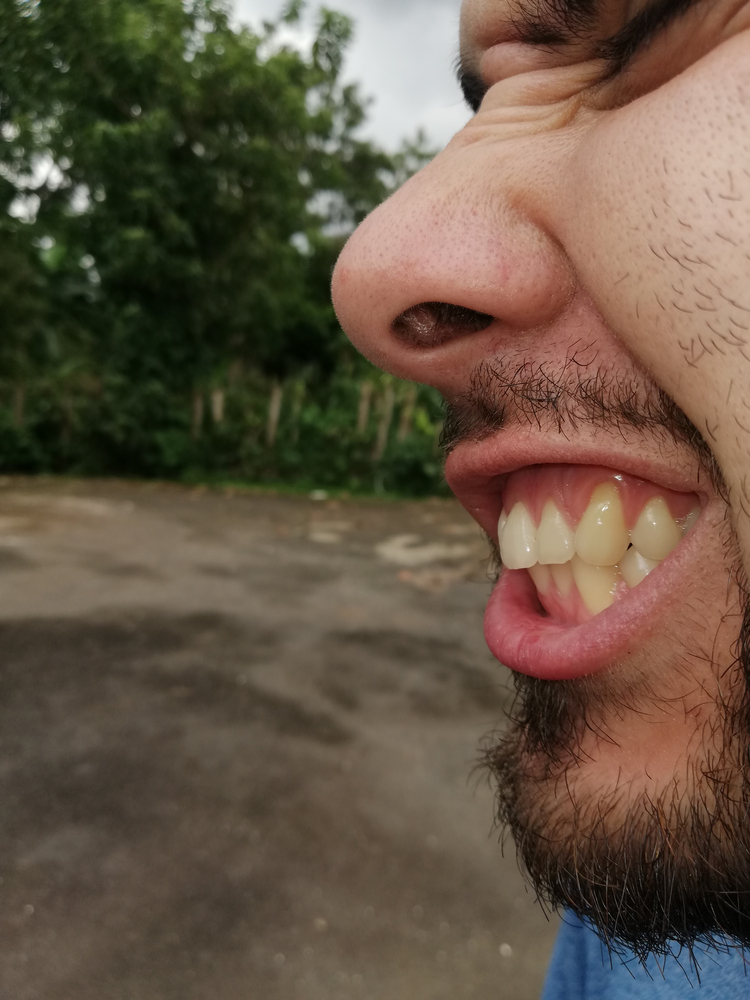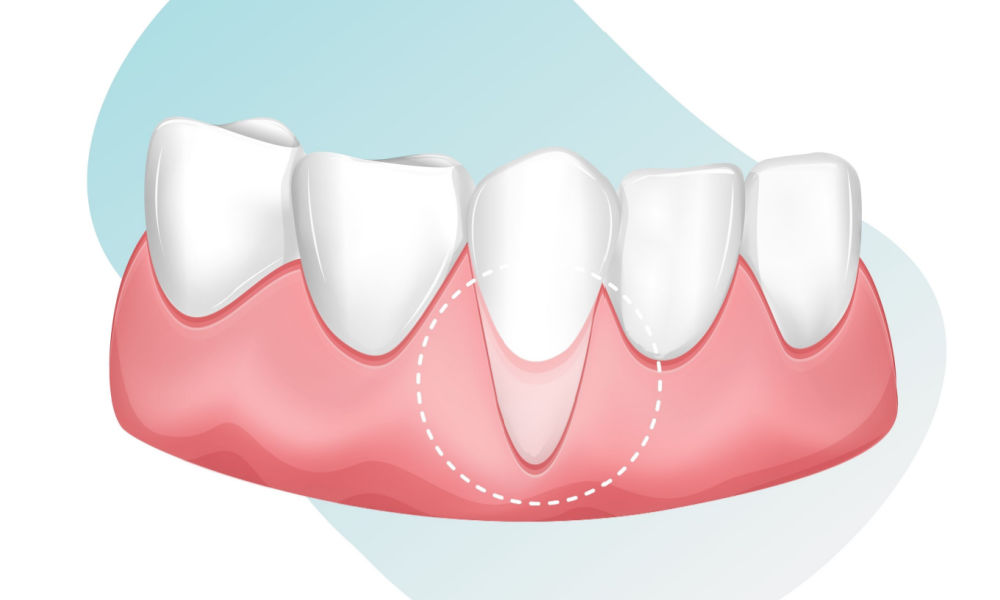If you've noticed the start of receding gum on one tooth, you're probably wondering how to treat this condition. There are several causes and treatments to consider, as well as some natural methods. This article will discuss the main causes of this condition and its symptoms, as well as some of the more effective methods for treating it. Also, you'll learn how to prevent the condition from recurring. Keep reading for more tips.
Table of Contents
Treatments
There are several dental treatments for receding gum on one tooth, but a mild case will require a home remedy, such as brushing. You can try tooth-colored dental composite resin, which will cover the exposed tooth surface. However, this will not fix the problem, and your Wilmington Periodontics and Implants dentist may recommend a surgical procedure to stabilize the receding gum. This procedure involves removing soft tissue from another part of the mouth and placing it on the affected tooth's side.

Many different things can cause gums to recede, including smoking, lip and tongue piercing, and misaligned teeth. Often, this problem is caused by damage to the teeth, but sometimes gum recession is due to a dental condition. Receding gums can even be caused by a disease called periodontitis, which can destroy the bone and tissue holding teeth in place.
A good diet and good oral hygiene are important to prevent gum recession. Your dentist will also advise you on how to prevent it from advancing. If you've been using tobacco, you should stop immediately. In addition, you can use an antimicrobial mouthwash to reduce bacteria and avoid infection. Scaling and planing are two common procedures to fix receding gum on one tooth. Your dentist will suggest regular checkups to ensure that your gums don't continue to recede.
While some of these techniques work well, it's recommended that you seek professional advice from your dentist before undergoing any treatment. Receding gums on one tooth can be painful, and it may cause sensitivity in the tooth. You may also notice the presence of pus in the space between the teeth and gums. The root of the tooth can be visible. These symptoms may cause tooth sensitivity and even severe bleeding.
If you'd like to avoid the painful and costly procedures that involve scalpel-and-suture-filled gum surgery, you can try the Chao Pinhole Surgical Technique. This procedure uses a small entry point and a local anesthetic to remove excess gum. The procedure takes approximately one to two hours and can restore gum coverage for many years. A pinhole-sized entry hole is needed for this procedure.

Causes
If you have receding gums on one tooth, then chances are you have a dental trauma that caused the problem. Probably, you chewed something sharp or were forced to bite down by a force from outside. Even if your gums have healed, this condition isn't pleasant and should be addressed by a dentist. Here are a few things you can do to improve the health of your gums.
Regular dental visits are crucial to prevent receding gum. Your dentist can detect this problem in its early stages so that you can start treatment. If you notice that your gums have receded too much, visit your dentist immediately. Gum recession is an extremely common dental condition and can result in tooth sensitivity and discomfort. Several factors can contribute to this condition, including genetics, health conditions, and improper brushing techniques.
One of the most common causes of receding gums is gum disease. If you notice that your gums are starting to recede on one tooth, visit your dentist as soon as possible. Doing so will prevent the situation from getting worse. Moreover, it will allow you to avoid any dental procedure that could lead to loose teeth. Ultimately, the treatment for receding gums on one tooth is a long-term solution.
Besides poor hygiene, some genetics can also contribute to this condition. Some people are more prone to gum recession than others, so be sure to follow good oral hygiene practices and visit your dentist if you notice receding gum on one tooth. There are many ways to prevent this from happening. However, it is important to remember that some people may have a genetic predisposition to this condition. Aside from a poor oral hygiene habits, over-brushing and aggressive tooth brushing can also damage your gums.
There are many natural remedies for gum inflammation. One of these is aloe vera. It can help fight harmful bacteria that cause gum inflammation and promote gum tissue regeneration. Medicinal aloe vera can be injected into the affected gums to restore the health of the gum tissue. Likewise, drinking green tea can help reverse receding gums naturally. You should try it if you haven't done so already.

Symptoms
If you've noticed that your gums are receding on one tooth, you may be suffering from the early signs of periodontal disease. This is a destructive form of gum disease. Gum recession can be caused by tartar buildup, improper brushing techniques, or trauma to the gums. In some cases, genetics or eating disorders may also be to blame. No matter what the cause, it's important to know how to spot the signs of periodontal disease to prevent it from progressing.
In some cases, gum recession occurs gradually. In the early stages, the gums appear pink and scalloped around the tooth. Over time, the gums become soft and bleed, and the teeth begin to move away from the gums. The space between the gums and the tooth increases, exposing the roots. If left untreated, this condition can lead to loose teeth and periodontal disease. Even worse, the loss of attachment structure can result in severe tooth pain and sensitivity.
Despite the early stages of this condition, the underlying causes are often unavoidable. For example, if the gums recede on only one tooth, the root of the tooth may be exposed. If this happens, the exposed root surface will become vulnerable to decay and infection. Early treatment is essential, as advanced gum recession can lead to more severe issues like sensitivity, infection, and swelling of the tooth.
A dentist can perform surgery to fix the problem. This procedure is done using tissue taken from the roof of the mouth and surrounding gums. The procedure is successful in covering the exposed root of the tooth. The best prevention against receding gums is regular dental visits and a good oral hygiene routine. Brushing twice a day for two minutes will help remove plaque bacteria. You should also visit a periodontist regularly.
Other possible causes of gum recession include grinding the teeth and smoking. In the worst case, it can also be caused by periodontitis, a serious condition affecting the gums. When these pockets become infected, the underlying bone and tissue can be damaged and tooth loss can occur. Fortunately, there are many ways to treat receding gum. If you notice any of these signs, schedule an appointment with a periodontist as soon as possible.
Natural remedies
If you've noticed that your gums have started to recede on one or more of your teeth, you may want to try some of these natural remedies for your gums. In addition to regular visits to your dentist, these remedies may help you stop the disease in its tracks and prevent it from progressing any further. Besides, they can work in tandem with standard medical treatments, like surgery. Listed below are some of the most effective natural remedies for receding gums.
Essential oils can help with gum recession. The essential oils eucalyptus and peppermint contain strong antibacterial, antiviral, and antifungal properties that help stimulate new gum tissue. Clove essential oil is anti-bacterial and disinfectant, which helps fight periodontal disease. You can also use a mixture of the essential oils and apply them directly to your gums. If you have receding gums on just one tooth, you may find some of these remedies helpful.
Oil pulling is another way to help your gums. Oil pulling is a popular natural remedy for reducing plaque and gingivitis. To use this treatment, you'll need high-quality coconut oil or sesame oil. The oil is swished around the mouth for about 20 minutes, and it works very well to remove plaque from your teeth. Lastly, drinking green tea can promote gum health.
Aside from proper oral hygiene, oil pulling is a popular alternative to traditional medicine. By swishing a teaspoon of coconut oil around your mouth for 20 minutes, you'll help reduce plaque buildup. And don't forget to brush your teeth every day with a soft toothbrush with moderate pressure. And of course, you'll feel better after doing all these natural remedies for receding gum on one tooth.
To prevent gum recession, it's important to follow a healthy diet and lifestyle. Avoid smoking and chewing tobacco, as these habits can contribute to gum recession. These simple home remedies for receding gums are safe and effective and may help you improve your oral health without a trip to the dentist. But if you don't want to pay a fortune for expensive cosmetic surgery, consider using natural remedies to restore your gums to their original position.
Watch our video on Receding Gum on one tooth
Sources:



